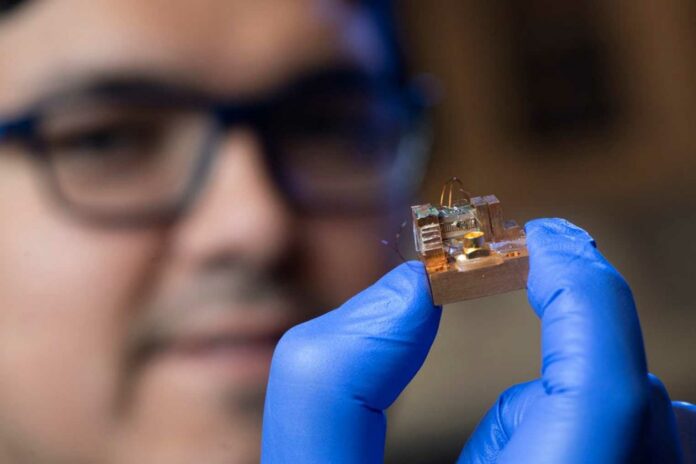To fine-tune topologically protected states in quantum materials, researchers lack efficient methods for simultaneously modulating the crystal lattice and monitoring changes in the electronic structure within a single sample.
Researchers from the University of California, Irvine, and Los Alamos National Laboratory have devised a new method to transform everyday materials like glass into materials scientists can use to make quantum computers.
Luis A. Jauregui, professor of physics & astronomy at UCI and lead author of the new paper, said, “The materials we made are substances that exhibit unique electrical or quantum properties because of their specific atomic shapes or structures. Imagine transforming glass, typically considered an insulating material, into efficient conductors akin to copper. That’s what we’ve done.”
The study at the University of California, Irvine, focused on transforming poor-conducting quantum materials into good conductors by applying strain at the atomic scale. The researchers used a specialized apparatus called a “bending station” to apply significant strain, altering the nuclear structure of hafnium pentatelluride and making it suitable for use in quantum computers. This work contributes to developing materials that can help overcome the limits of conventional silicon-based computers.
Jauregui said, “To create such materials, we must ‘poke holes’ in the atomic structure. Strain allows us to do that.”
Jinyu Liu, who is the first author of the paper and a postdoctoral scholar working with Jauregui, said, “You can also turn the atomic structure change on or off by controlling the strain, which is useful if you want to create an on-off switch for the material in a quantum computer in the future.”
Co-author Ruqian Wu, professor of physics and Associate Director of the UCI Center for Complex and Active Materials – a National Science Foundation Materials Research Science and Engineering Center (MRSEC), said, “I am pleased by the way theoretical simulations offer profound insights into experimental observations, thereby accelerating the discovery of methods for controlling the quantum states of novel materials. This underscores the success of collaborative efforts involving diverse expertise in frontier research.”
Michael Pettes, study co-author and scientist with the Center for Integrated Nanotechnologies at Los Alamos National Laboratory, said, “I’m excited that our team was able to show that these elusive and much-sought-after material states can be made. This is promising for the development of quantum devices, and the methodology we demonstrate is compatible with experimentation on other quantum materials as well.”
Journal Reference:
- Liu, J., Zhou, Y., Yepez Rodriguez, S. et al. Controllable strain-driven topological phase transition and dominant surface-state transport in HfTe5. Nat Commun 15, 332 (2024). DOI: 10.1038/s41467-023-44547-7
